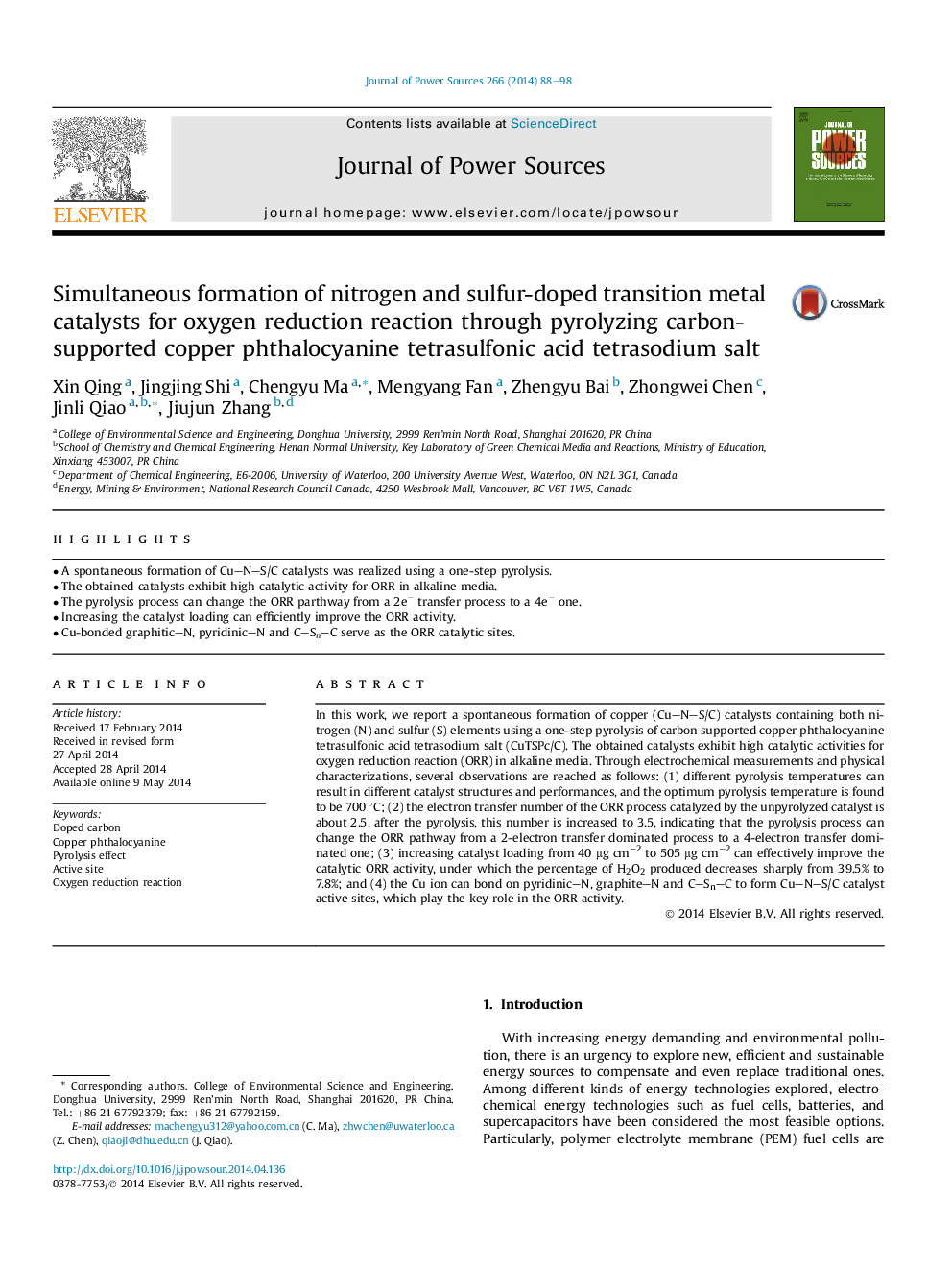| کد مقاله | کد نشریه | سال انتشار | مقاله انگلیسی | نسخه تمام متن |
|---|---|---|---|---|
| 1286723 | 1497966 | 2014 | 11 صفحه PDF | دانلود رایگان |
• A spontaneous formation of Cu–N–S/C catalysts was realized using a one-step pyrolysis.
• The obtained catalysts exhibit high catalytic activity for ORR in alkaline media.
• The pyrolysis process can change the ORR parthway from a 2e− transfer process to a 4e− one.
• Increasing the catalyst loading can efficiently improve the ORR activity.
• Cu-bonded graphitic–N, pyridinic–N and C–Sn–C serve as the ORR catalytic sites.
In this work, we report a spontaneous formation of copper (Cu–N–S/C) catalysts containing both nitrogen (N) and sulfur (S) elements using a one-step pyrolysis of carbon supported copper phthalocyanine tetrasulfonic acid tetrasodium salt (CuTSPc/C). The obtained catalysts exhibit high catalytic activities for oxygen reduction reaction (ORR) in alkaline media. Through electrochemical measurements and physical characterizations, several observations are reached as follows: (1) different pyrolysis temperatures can result in different catalyst structures and performances, and the optimum pyrolysis temperature is found to be 700 °C; (2) the electron transfer number of the ORR process catalyzed by the unpyrolyzed catalyst is about 2.5, after the pyrolysis, this number is increased to 3.5, indicating that the pyrolysis process can change the ORR pathway from a 2-electron transfer dominated process to a 4-electron transfer dominated one; (3) increasing catalyst loading from 40 μg cm−2 to 505 μg cm−2 can effectively improve the catalytic ORR activity, under which the percentage of H2O2 produced decreases sharply from 39.5% to 7.8%; and (4) the Cu ion can bond on pyridinic–N, graphite–N and C–Sn–C to form Cu–N–S/C catalyst active sites, which play the key role in the ORR activity.
Journal: Journal of Power Sources - Volume 266, 15 November 2014, Pages 88–98
